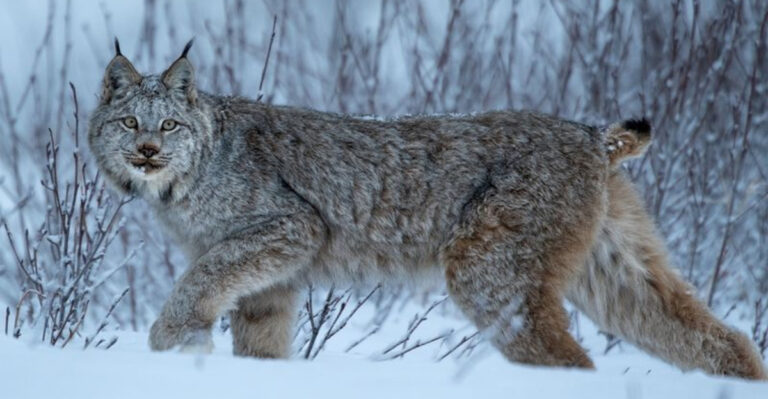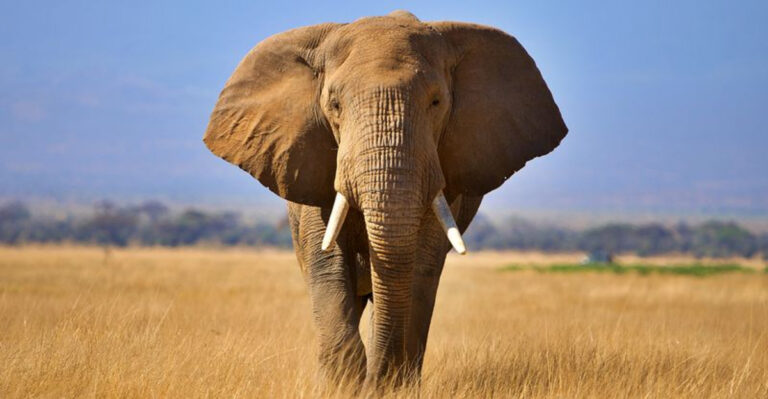17 Songbirds Of America That Are A Must-See For Bird Lovers
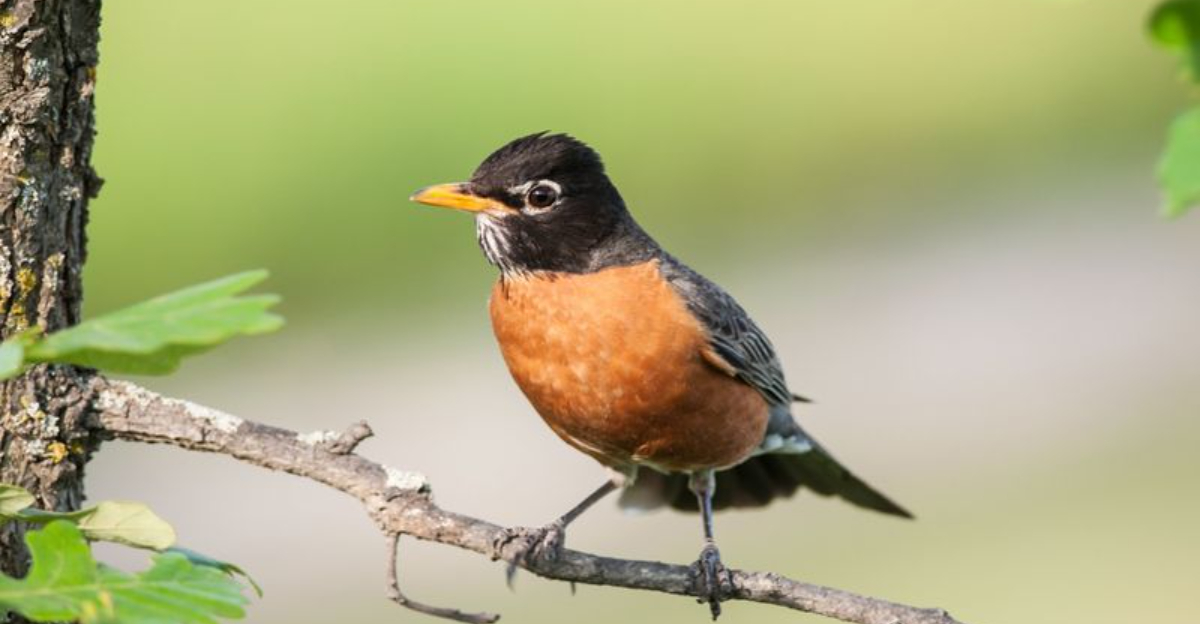
Bird watching brings a special kind of joy, especially when you spot America’s most melodious residents. Songbirds fill our forests, backyards, and parks with beautiful music and vibrant colors.
Whether you’re a seasoned birder or just starting out, these feathered vocalists will make your heart sing with their unique calls and stunning plumage.
1. The Scarlet Show-Off
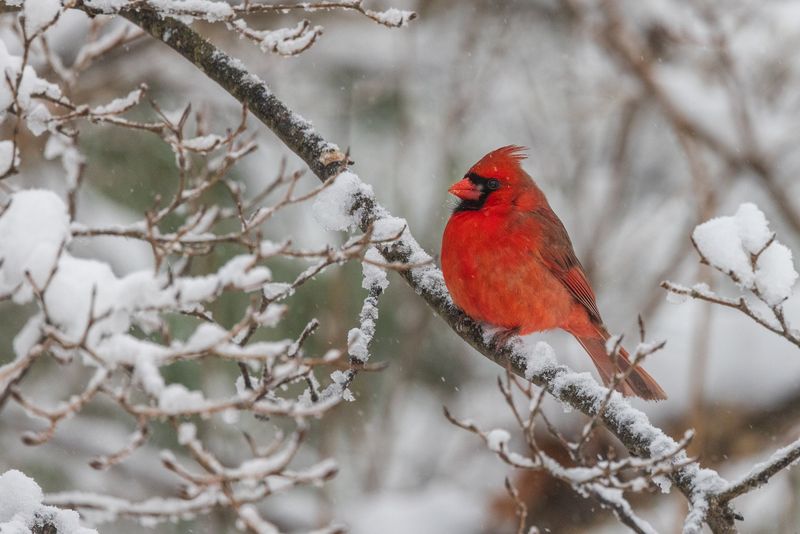
Like a cardinal rule of nature, the Northern Cardinal’s brilliant red plumage stops traffic in winter landscapes. Males flash their crimson feathers while females sport subtle tan with reddish accents.
Cardinals don’t migrate, sticking around all year to brighten snowy days. Their clear, whistling songs sound like they’re saying “cheer, cheer, cheer” – perhaps nature’s way of encouraging us through cold months.
2. Sunset On Wings
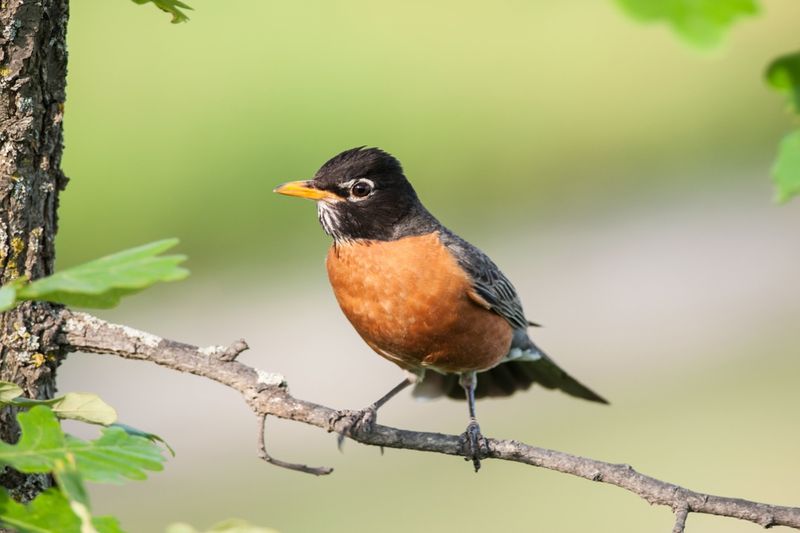
Wearing the colors of dusk across its breast, the American Robin announces spring’s arrival before the calendar does. These familiar birds hop energetically across lawns, cocking their heads to listen for worms beneath the soil.
Despite their association with spring, many robins actually stick around all winter, switching from worms to berries. Their morning chorus of cheerful caroling has woken generations of Americans.
3. Blueberry With Wings
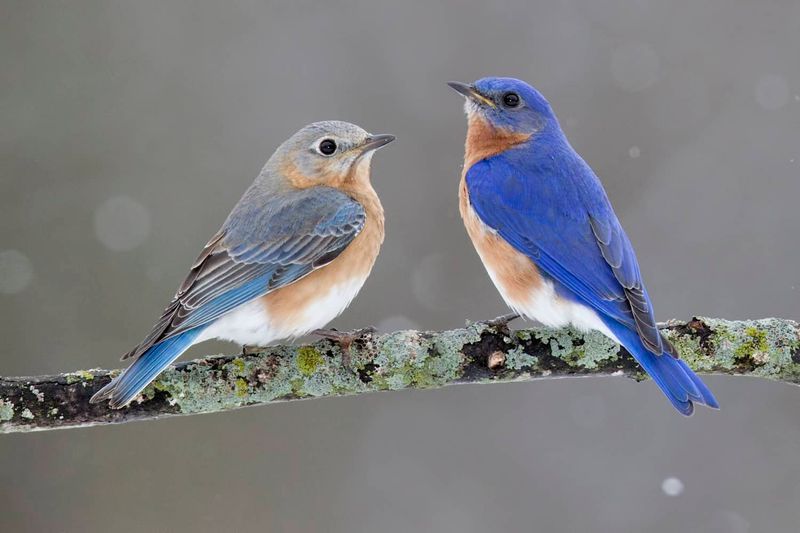
Tiny azure jewels flitting through eastern woodlands, Eastern Bluebirds capture hearts with their gentle warbling songs. Once declining due to habitat loss, these symbols of happiness have made a comeback thanks to dedicated nest box programs.
Males sport sky-blue backs with rusty breasts, while females wear more subdued versions of the same palette. Their soft, melodious calls sound like liquid happiness bubbling through the trees.
4. Sunshine In Feathers

Bursting with lemon-yellow brilliance, the American Goldfinch brings tropical flair to temperate landscapes. These acrobatic little birds perform aerial ballet as they bounce through the air, singing their sweet, canary-like songs.
Summer transforms male goldfinches from drab olive to dazzling yellow, making them look like flying sunbeams. They’re strict vegetarians, favoring thistle seeds which their specialized beaks extract with surgical precision.
5. Nature’s Jazz Musician

Unassuming in appearance but extraordinary in voice, the Brown Thrasher boasts a repertoire of over 1,100 song types – more than any other North American bird. This rusty-colored virtuoso with piercing yellow eyes repeats each phrase twice, as if making sure you caught it the first time.
Hidden in dense shrubs, these shy performers often reveal themselves only through their incredible vocal abilities.
6. The Midnight Serenader
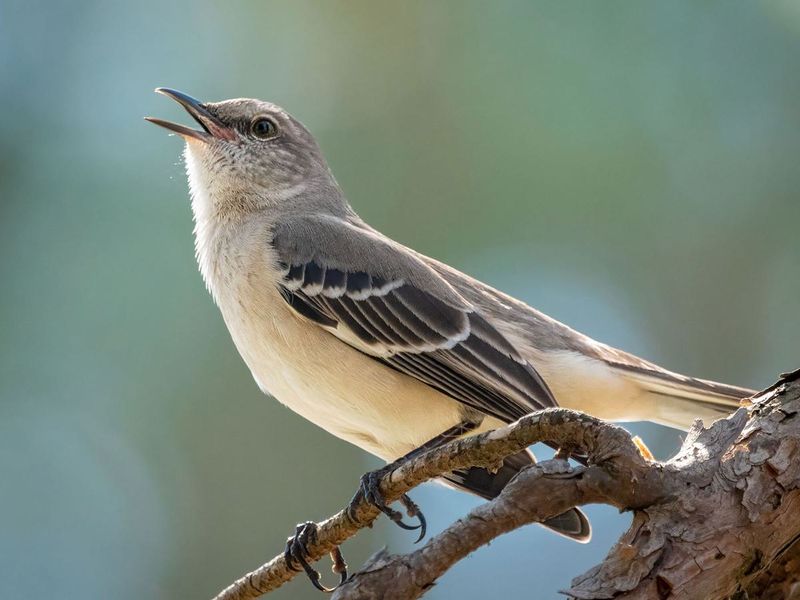
When darkness falls and other birds go silent, the Northern Mockingbird might just be warming up. These vocal mimics perform through the night, especially during full moons, borrowing songs from other birds, frogs, and even car alarms.
Gray ghosts with flashy white wing patches, mockingbirds can learn hundreds of different sounds. Territorial defenders extraordinaire, they’ll fearlessly dive-bomb much larger creatures – including humans – who venture too close to their nests.
7. Flame-Throated Wonder

Barely larger than your thumb, the Ruby-throated Hummingbird packs outsized wonder into its tiny frame. Males flash iridescent red throat patches that appear black until they catch the light just right – nature’s most spectacular magic trick.
These aerial acrobats beat their wings 50 times per second and can fly backward. Despite weighing less than a penny, they migrate across the Gulf of Mexico each year – a 500-mile journey completed in a single, non-stop flight.
8. The Woodland Flutist

With a voice as sweet as syrup, the Wood Thrush fills eastern forests with flute-like echoes that seem too beautiful to come from a bird. Rusty-brown backs and spotted breasts provide perfect camouflage among the forest leaves.
Shy musicians, they sing in harmony with themselves, using their unique vocal structure to produce two notes simultaneously, creating haunting, ethereal melodies at dawn and dusk.
9. The Masked Bandit
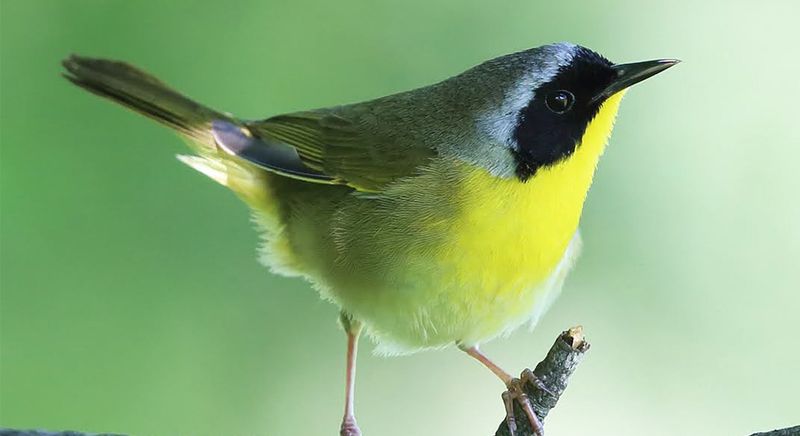
Sporting a black face mask worthy of Zorro, the Common Yellowthroat brings mystery and charm to wetland edges. Males announce their presence with a distinctive “witchety-witchety-witchety” that sounds like they’re casting a woodland spell.
Despite their bold markings, they’re masters of the quick disappearing act, vanishing into dense vegetation only to pop up moments later in a completely different spot.
10. The Sky Dancer
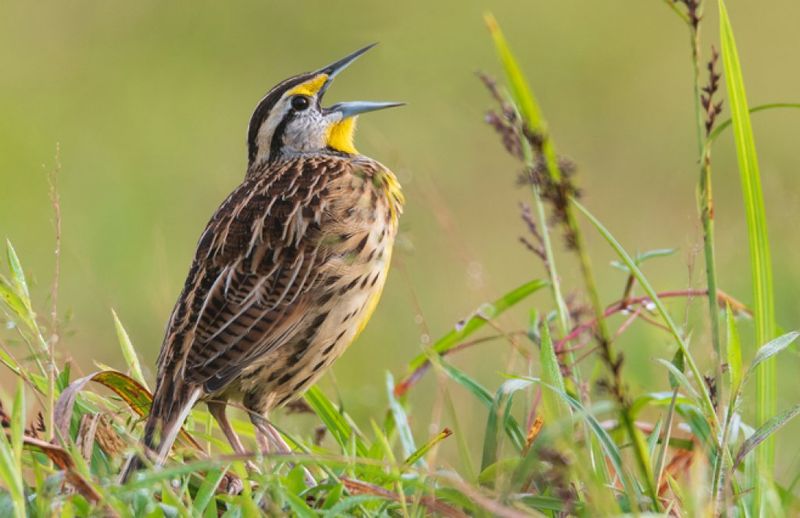
Few sights match the Eastern Meadowlark’s heart-stopping aerial displays above grasslands. With a voice that carries nearly a mile, their sweet, slurred whistle announces “spring-of-the-year” to rural America.
Masters of camouflage, they build hidden grass tunnels leading to their nests – architectural wonders that protect their young from predators and weather.
11. The Cobalt Nomad
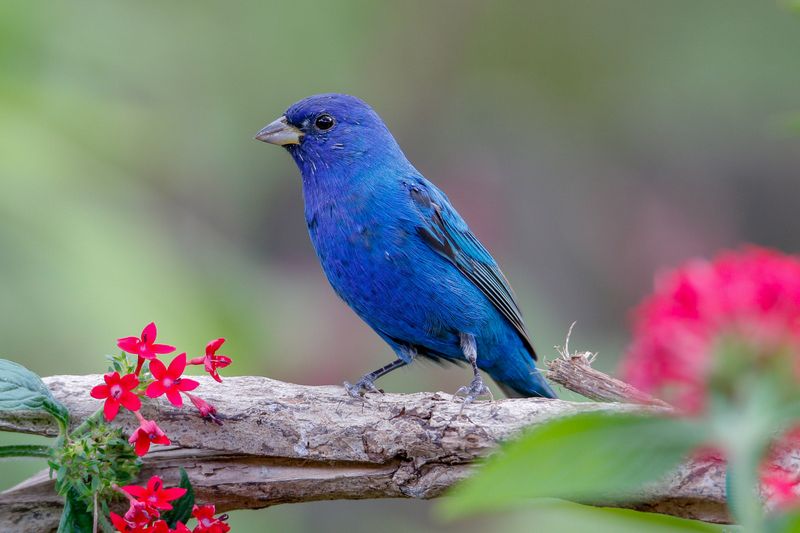
Flying sapphires dart across mountain meadows when Indigo Buntings arrive each spring. These migrants navigate by the stars, using the North Star to guide their incredible journeys between Central America and North America.
Males transform from brown to brilliant blue through an optical illusion – their feathers contain no blue pigment but scatter light like the sky. Their cheerful, double-noted songs sound like they’re repeating “fire-fire, where-where, here-here” as they sing from treetops.
12. The Flame Dancer

Glowing like embers among green leaves, male Baltimore Orioles bring tropical splendor to northern woodlands. Their distinctive hanging sock-like nests showcase remarkable engineering skills – woven so tightly they can hold water.
These orange-and-black beauties possess a sweet tooth, readily visiting feeders offering grape jelly or orange halves. Their flute-like whistles carry a nostalgic quality, evoking summer evenings and baseball games for many Americans.
13. The Tuxedo Troubadour

Dressed for a perpetual gala in black-and-white formal wear, the Black-capped Chickadee charms with its friendly curiosity. These tiny birds perform amazing memory feats, remembering thousands of hiding spots where they’ve stashed seeds for winter.
Their name comes from their signature call – a cheerful “chick-a-dee-dee-dee” that varies in meaning based on how many “dees” they add.
14. The Desert Diva
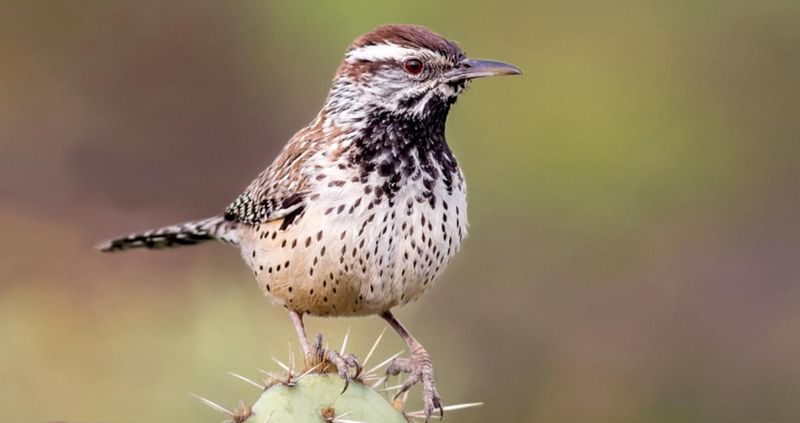
Cactus Wrens break the desert silence with raucous, machine-gun like rattles that echo across southwestern landscapes. As North America’s largest wrens, they boldly build football-shaped nests in the most dangerous real estate – right among the spines of cholla and prickly pear cacti.
Speckled songsters, they mate for life and stay active year-round, taking regular dust baths to maintain their feathers in the harsh desert environment.
15. The Painted Wanderer
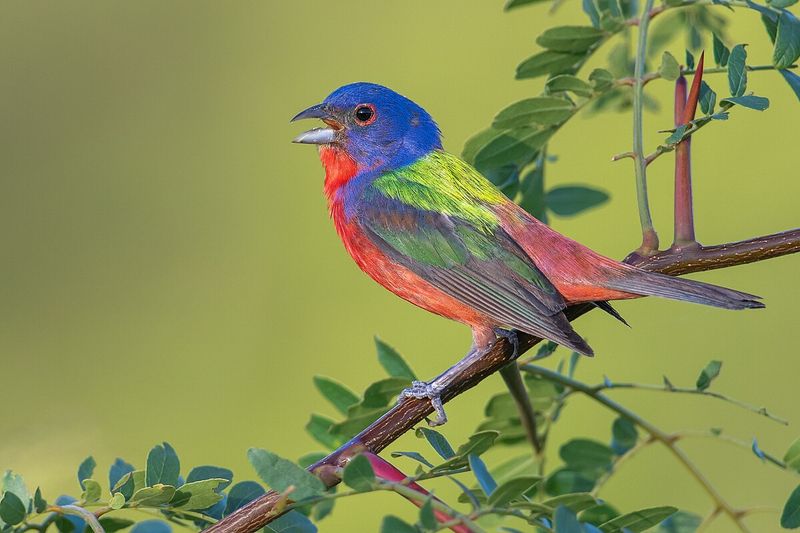
Looking like they flew straight out of a watercolor painting, Painted Buntings stun observers with their impossible combination of blue, green, red, and yellow. These living rainbows remain surprisingly hard to spot despite their vivid colors, preferring brushy tangles and dense habitat.
Watching one feed quietly among southern thickets feels like witnessing a rare natural treasure.
16. The Crimson Conjurer

Streaking through pine forests like living flames, Scarlet Tanagers create magical moments for lucky observers. Males wear shocking red with jet-black wings – a combination so striking it seems unreal against green foliage.
Winter transforms these birds completely – males molt their scarlet feathers for yellowish-green ones before migrating to South America, making them masters of seasonal disguise.
17. The Twilight Whistler
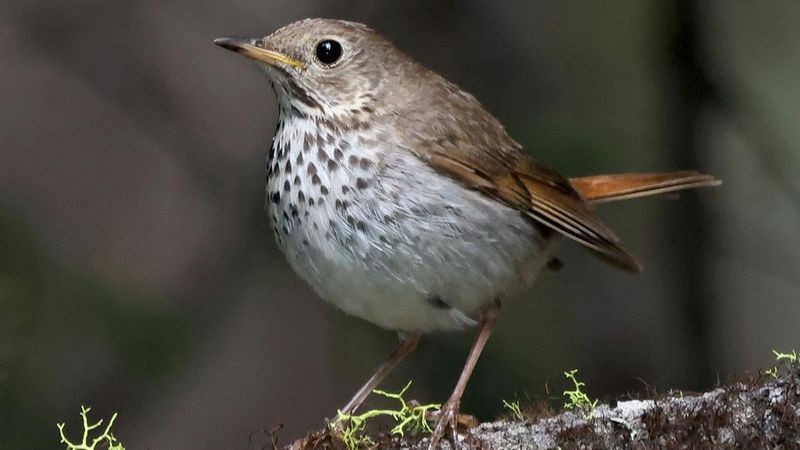
As daylight fades to dusk, the haunting song of the Hermit Thrush rises from deep forests – a sound often described as the most beautiful in North America. Spiraling, flute-like notes hold ancient wisdom, starting with a clear whistle followed by echoing, ethereal trills.
Rusty-tailed woodland spirits move quietly through underbrush, often revealed only by the distinctive habit of slowly raising and lowering their tail.



